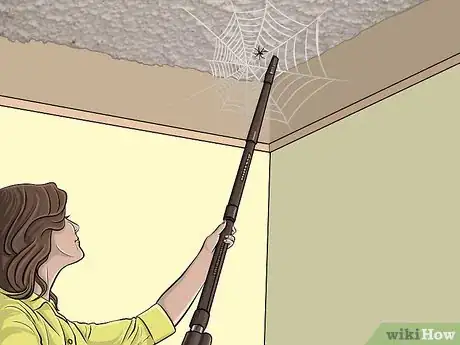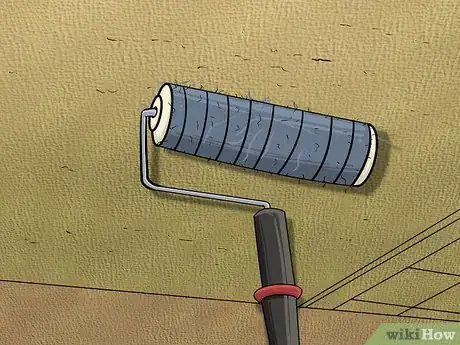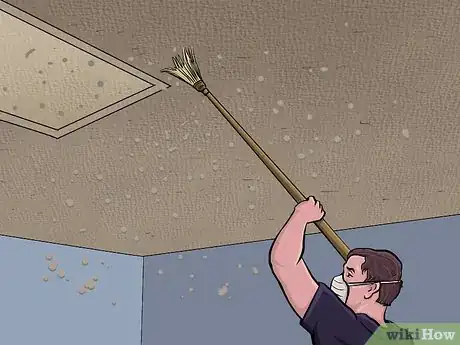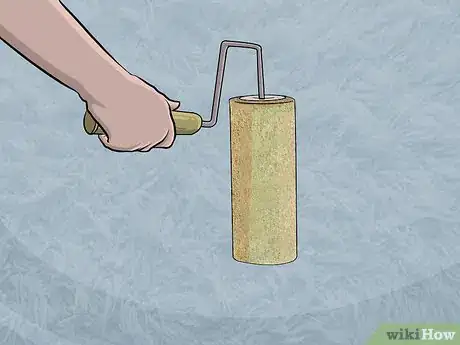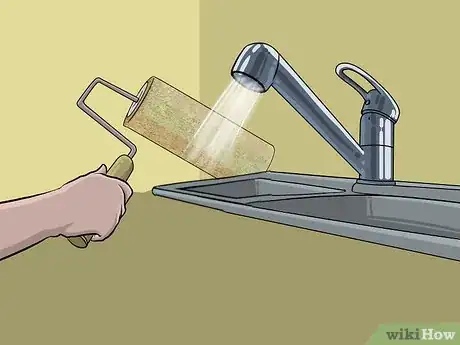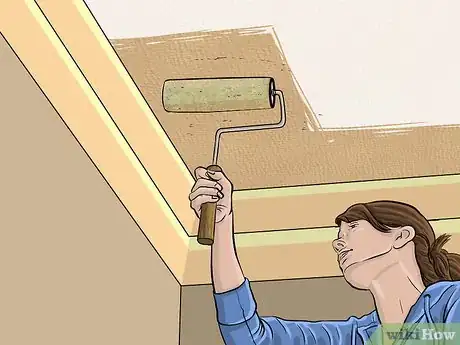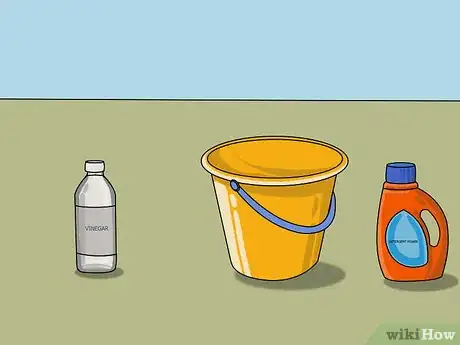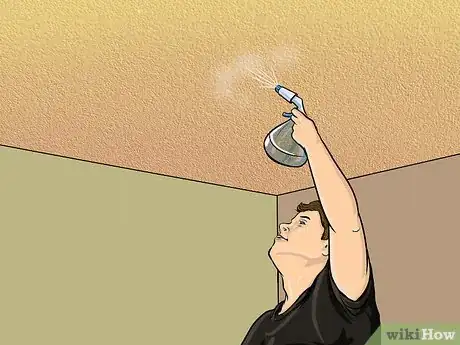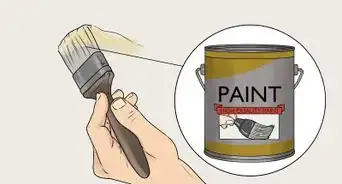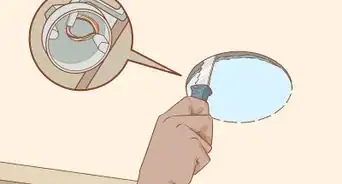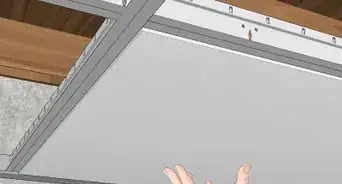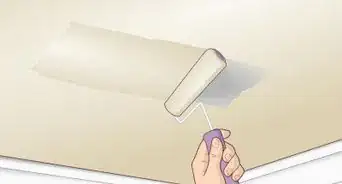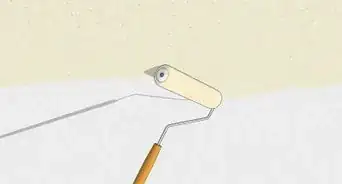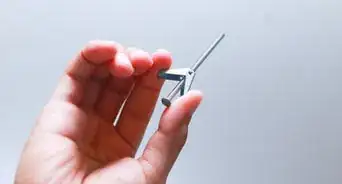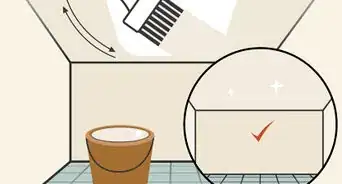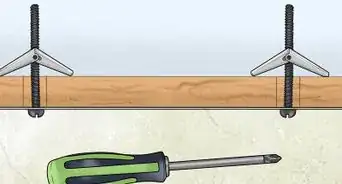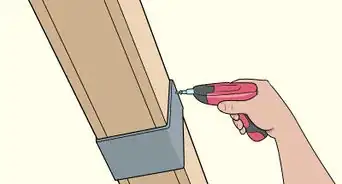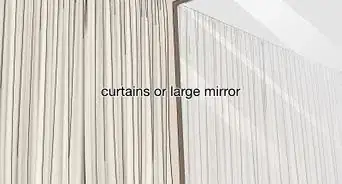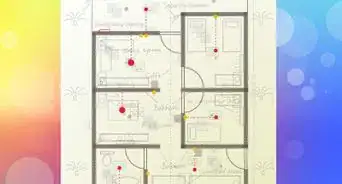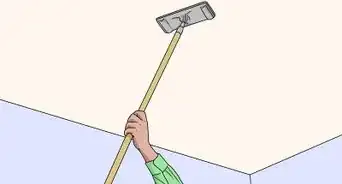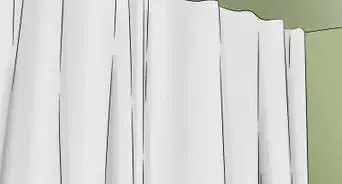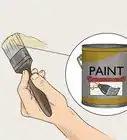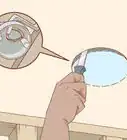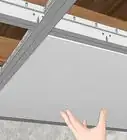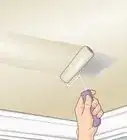This article was co-authored by Michelle Driscoll, MPH. Michelle Driscoll is the Owner of Mulberry Maids, which is based in Fort Collins, Colorado. With five years of experience, her business specializes in cleaning homes and small offices. She holds a Masters in Public Health from the Colorado School of Public Health. Additionally, Mulberry Maids has an A+ rating from the Better Business Bureau.
wikiHow marks an article as reader-approved once it receives enough positive feedback. In this case, 89% of readers who voted found the article helpful, earning it our reader-approved status.
This article has been viewed 56,322 times.
Popcorn ceilings, also called acoustic ceilings, are textured ceiling treatments that were popular in the mid 20th century. While they were installed for their appearance and ability to hide imperfections, they may leave you with a cleaning problem. Popcorn ceilings hold onto dust and are more challenging to clean because the texture damages easily. Still, regular, careful maintenance will leave you with a unique ceiling as long as you take down cobwebs, roll off dust regularly, and tackle stains carefully with water and vinegar or detergent.[1]
Steps
Removing Cobwebs
-
1Vacuum the webs. A vacuum cleaner provides a way to suck up the cobwebs without rubbing the delicate popcorn texture. Choose a handheld vacuum with a hose extension that reaches the ceiling. For high ceilings, you’ll need a ladder. Point the vacuum and let its force suck away stubborn cobwebs.
-
2Try a feather duster. When you don’t have the right vacuum cleaner, a feather duster will do. Use a feather duster on a pole extension or climb up with a ladder. Move the duster under each cobweb and lift it away so it doesn’t leave marks.
- Remember to clean the cobwebs off the duster before you use it again so they don’t leave marks elsewhere.
Advertisement -
3Use a lint roller. Get non-sticky lint roller tubes from the store. These can be used to replace paint rollers heads that work with extension handles. Tape the ends of the rollers to protect the walls. Roll over the ceiling, then throw away whatever webbing comes down. Replace the tape as the webs stick to it.[2]
Dusting the Ceiling
-
1Wrap duct tape around a paint roller. Paint rollers are gentle on popcorn ceilings, but you can choose a thick-nap one for maximum protection. Wrap duct tape tightly around it, sticky side up. Unlike brooms, this combination won’t damage the ceiling.[3]
-
2Roll over the ceiling. Gently move the roller over the ceiling. The dust will stick to the tape. When it stops working, try replacing the tape. The flexible nature of the roller and tape should also help you get into corners.
-
3Use a broom. If you don’t mind causing flakes of the ceiling to fall, a broom can work. Make sure your standard household broom is clean so it doesn’t reintroduce dirt. As gently as possible, brush it across the ceiling. Flakes will come off, but so will the dust spots.
- Wear a mask and eye protection when you do this. Popcorn ceilings from the 1970s and earlier may include asbestos, which is harmless when left alone.[4]
Treating Stains with Water
-
1Get a paint roller. Paint rollers are soft and rounded so they don’t break apart the textures of the popcorn ceiling. Pick a thick-nap roller, ¾ inches (19 mm) thick or more. Also opt for an extension handle to make cleaning easier. The shape and softness of the roller will protect the popcorn texture from damage.[5]
-
2Dampen the roller. Expose the roller to clean water. Try using a small flow from a faucet to splash or lightly coat the roller. You only need enough to make the roller feel damp. It should not drip at all.
- Water can easily damage this delicate ceiling, so be cautious or consider hiring a professional.
-
3Roll over the surface. Push the paint roller over the dirty spots. Move in a line, applying an even coat of water. You don’t need to push hard against the ceiling. Rinse the roller when it gets dirty so it doesn’t spread any dust or dirt. Remember to squeeze out the excess moisture before using the roller again.
-
4Add vinegar, detergent, or bleach. If your ceiling has deeper stains, you’ll need to repeat the process with a cleaning solution. In a bucket of water, add a small amount of vinegar, mild dish or laundry detergent, or bleach. If using bleach, mix 5 parts water with 1 part bleach. If using vinegar or detergent, use equal parts water and vinegar or detergent.[6]
- Bleach with water works best for smoke, mildew, and water stains.
-
5Apply the solution. Use your paint roller, keeping it damp instead of dripping, to roll even lines over the dirty portions of the ceiling. Alternatively, you can use a spray bottle to lightly spritz the ceiling. It requires climbing up on a ladder, but the spray bottle provides control over how much of the solution is applied to any spot. Allow the solution to sit and soak in. There’s no need to remove it, and trying to would put pressure on the popcorn texture.
- Before you do this, you can also apply a stain-blocking primer such as Kilz.
-
6Let the solution sit on the popcorn ceiling and repeat if needed. Wait a few hours to see if the solution has had the desired effect on the ceiling. If stains are still visible, repeat the application. You may need to repeat this process a few times for tough stains.
Community Q&A
-
QuestionCan hydrogen peroxide be used to clean a popcorn ceiling?
 Community AnswerThe only way to "clean" a popcorn ceiling would be to paint it. And that will be a somewhat messy but rewarding chore. The "popcorn" elements you see are added to the drywall spray mud right before it is sprayed onto the ceiling, so they will fall from the ceiling when you paint over them (not all but a lot of them). Never wet a ceiling with anything other than a "mist" of water and truly this is only done when the entire ceiling is being scraped to remove the popcorn texture for the process to upgrade the ceiling with new drywall spray texture minus the popcorns. I would not suggest this project for anyone other than a professional.
Community AnswerThe only way to "clean" a popcorn ceiling would be to paint it. And that will be a somewhat messy but rewarding chore. The "popcorn" elements you see are added to the drywall spray mud right before it is sprayed onto the ceiling, so they will fall from the ceiling when you paint over them (not all but a lot of them). Never wet a ceiling with anything other than a "mist" of water and truly this is only done when the entire ceiling is being scraped to remove the popcorn texture for the process to upgrade the ceiling with new drywall spray texture minus the popcorns. I would not suggest this project for anyone other than a professional.
Warnings
- Some popcorn ceilings, especially those made in the 1970s and earlier, contain asbestos. Submit a sample to a testing lab if you are not sure.⧼thumbs_response⧽
- Popcorn ceilings damage easily, so limit pressure and exposure to water and cleaning solutions.⧼thumbs_response⧽
Things You’ll Need
- Vacuum cleaner or duster
- Paint roller
- Duct tape
- Extension handle or ladder
- Mild vinegar or detergent
References
- ↑ https://www.thisoldhouse.com/ideas/3-ways-to-deal-popcorn-ceiling
- ↑ https://www.goclean.com/cleaning-textured-walls-popcorn-ceilings-and-rough
- ↑ http://www.thriftyfun.com/Cleaning-a-Textured-Popcorn-Ceiling.html
- ↑ http://crosslandteam.com/blog/2011/04/10/popcorn-ceilings-are-they-really-so-bad/
- ↑ http://www.bhg.com/homekeeping/house-cleaning/tips/cleaning-hacks/?slideId=69f7afdf-eef3-4ca5-aec7-ccaeab638829
- ↑ http://www.thriftyfun.com/Cleaning-a-Textured-Popcorn-Ceiling.html
About This Article
To clean a popcorn ceiling, first wrap a paint roller in duct tape, with the sticky-side of the tape facing up. Then, gently move the roller over the ceiling and the dust on the ceiling will stick to the tape. Next, if your ceiling has stains, remove the duct tape and dampen the roller with a little bit of water. Make sure that it’s just damp, not dripping. Then, use the roller to apply an even coat of water over the stains. For tougher stains, you may need to repeat the process using a cleaning solution made of equal parts vinegar and water. Keep reading to learn how to remove cobwebs from your ceiling.
